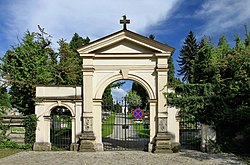
Powązki Cemetery, also known as Stare Powązki, is a historic necropolis located in Wola district, in the western part of Warsaw, Poland. It is the most famous cemetery in the city and one of the oldest, having been established in 1790. It is the burial place of many illustrious individuals from Polish history. Some are interred along the "Avenue of the Distinguished" – Aleja Zasłużonych, created in 1925. It is estimated that over one million people are buried at Powązki.
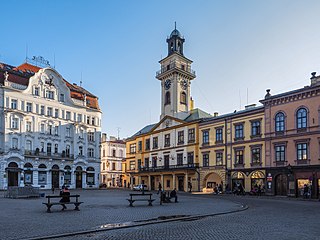
Cieszyn is a border town in southern Poland on the east bank of the Olza River, and the administrative seat of Cieszyn County, Silesian Voivodeship. The town has 33,500 inhabitants, and lies opposite Český Těšín in the Czech Republic. Both towns belong to the historical region of Cieszyn Silesia, and formerly constituted the capital of the Duchy of Cieszyn as a single town.

Jiří Třanovský, was a Lutheran priest and hymnwriter from the Cieszyn Silesia. Sometimes called the father of Slovak hymnody and the "Luther of the Slavs," Třanovský's name is sometimes anglicized to George Tranoscius. Both the Evangelical Lutheran Church in America and the Evangelical Lutheran Church in Canada remember his life and work annually, on the anniversary of his death.

The Chapel of Karol Scheibler, is a major architectural work in Łódź, Poland, built in 1888 and designed by architects Edward Lilpop and Józef Pius Dziekoński. It is located in the Evangelical-Augsburg part of the Old Cemetery at Ogrodowa Street 43.

Bludovice is a village and part of Havířov in Karviná District, Moravian-Silesian Region, Czech Republic. It was a separate municipality but after the expansion of Havířov founded in 1955 it became an administrative part of this city in 1960. The Lučina River flows through the village. It has a population of 2,744 (2020). The village lies in the historical region of Cieszyn Silesia.

Jesus Church or Grace Church is a Lutheran Church located in Cieszyn, Poland. It is one of the largest and most important Protestant churches in Poland.

Józef Kiedroń was a Polish mining engineer and politician.

The Evangelical Church of the Augsburg Confession in the Republic of Poland is a Lutheran denomination and the largest Protestant body in Poland with about 61,000 members and 133 parishes.

Dzięgielów is a village in Gmina Goleszów, Cieszyn County, Silesian Voivodeship, southern Poland, near the border with the Czech Republic. It lies in the Silesian Foothills and in the historical region of Cieszyn Silesia.

Juliusz Bursche was a bishop of the Evangelical-Augsburg Church in Poland. A vocal opponent of Nazi Germany, after the German invasion of Poland in 1939, he was arrested by the Germans, tortured, and sent to Sachsenhausen concentration camp where he died.

Karol Hławiczka was a Polish composer, pianist, teacher and Chopinologist.

Zofia Kirkor-Kiedroniowa was a Polish national activist.

Karol Stryja was a Polish conductor and teacher.
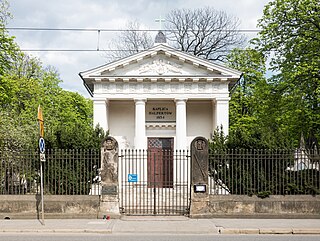
The Evangelical–Augsburg Cemetery, is a historic Lutheran Protestant necropolis located in the western Wola district of Warsaw, Poland.

The Evangelical Reformed Cemetery in Warsaw is a historic Calvinist Protestant cemetery in Wola, a district in the west of Warsaw, Poland.

Józef Berger was a Polish Lutheran pastor, theologian and politician from the region of Trans-Olza, Czechoslovakia. He was a member of the Polish People's Party, a political party active amongst middle-class Lutherans of the Polish minority in interbellum Czechoslovakia.
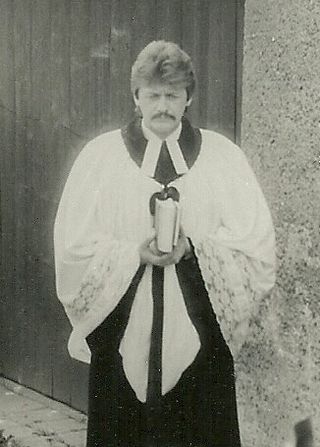
Bohuslav Kokotek was a Polish Czech Lutheran clergyman, journalist, activist of the Polish minority in the Czech Republic, and local politician.
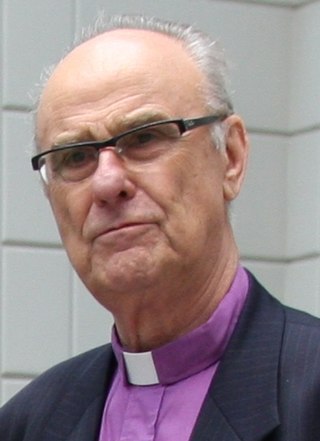
Jan Szarek was a Polish bishop of the Evangelical-Augsburg Church in Poland. He was also the head of the Polish Ecumenical Council from 1993 to 2001. He held an honorary doctorate from the Christian Theological Academy in Warsaw.

The Nowofarny cemetery in Bydgoszcz is the one of the largest Roman Catholic cemeteries in this Polish city. One of its oldest area has been registered on the Kuyavian-Pomeranian Voivodeship Heritage List.
